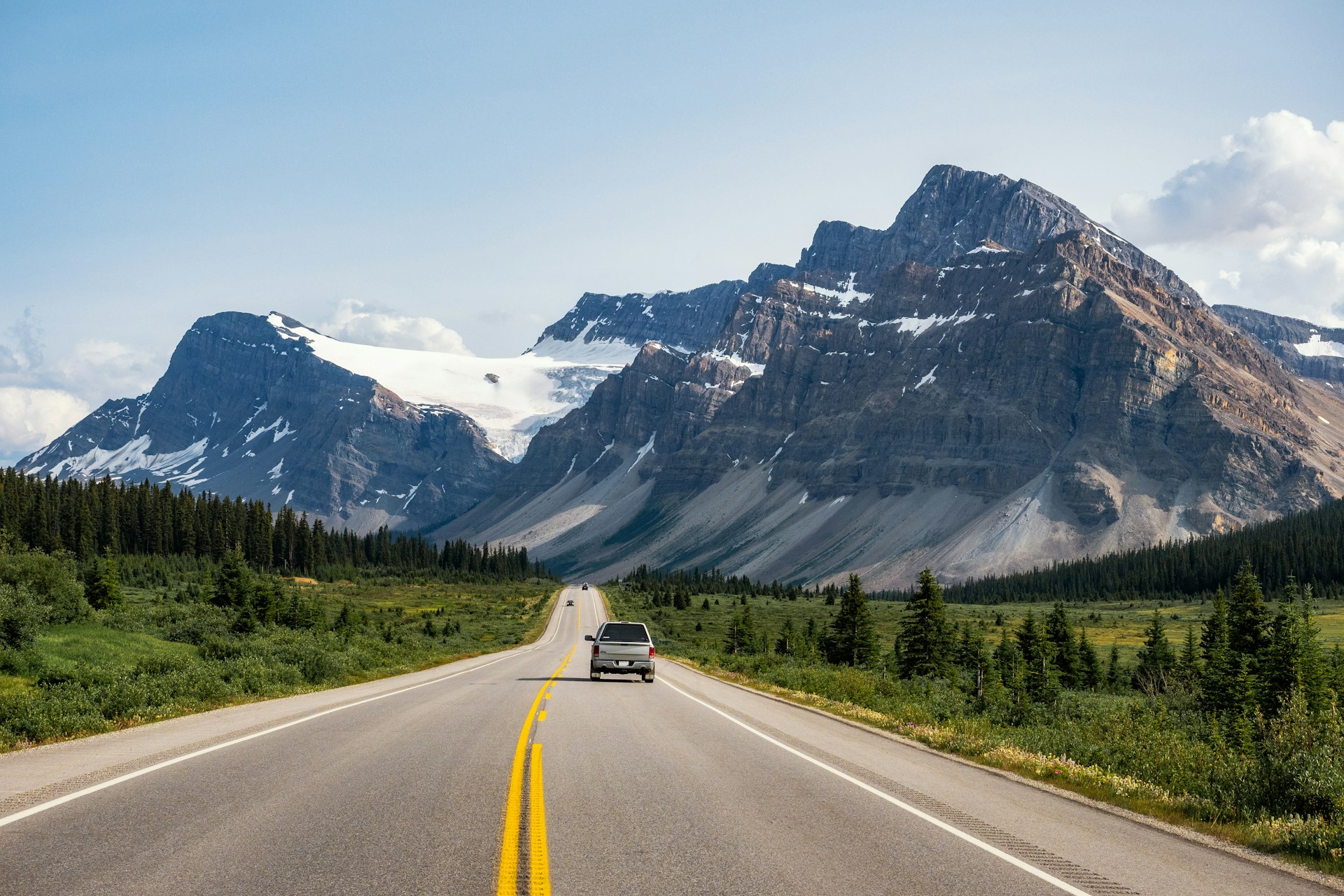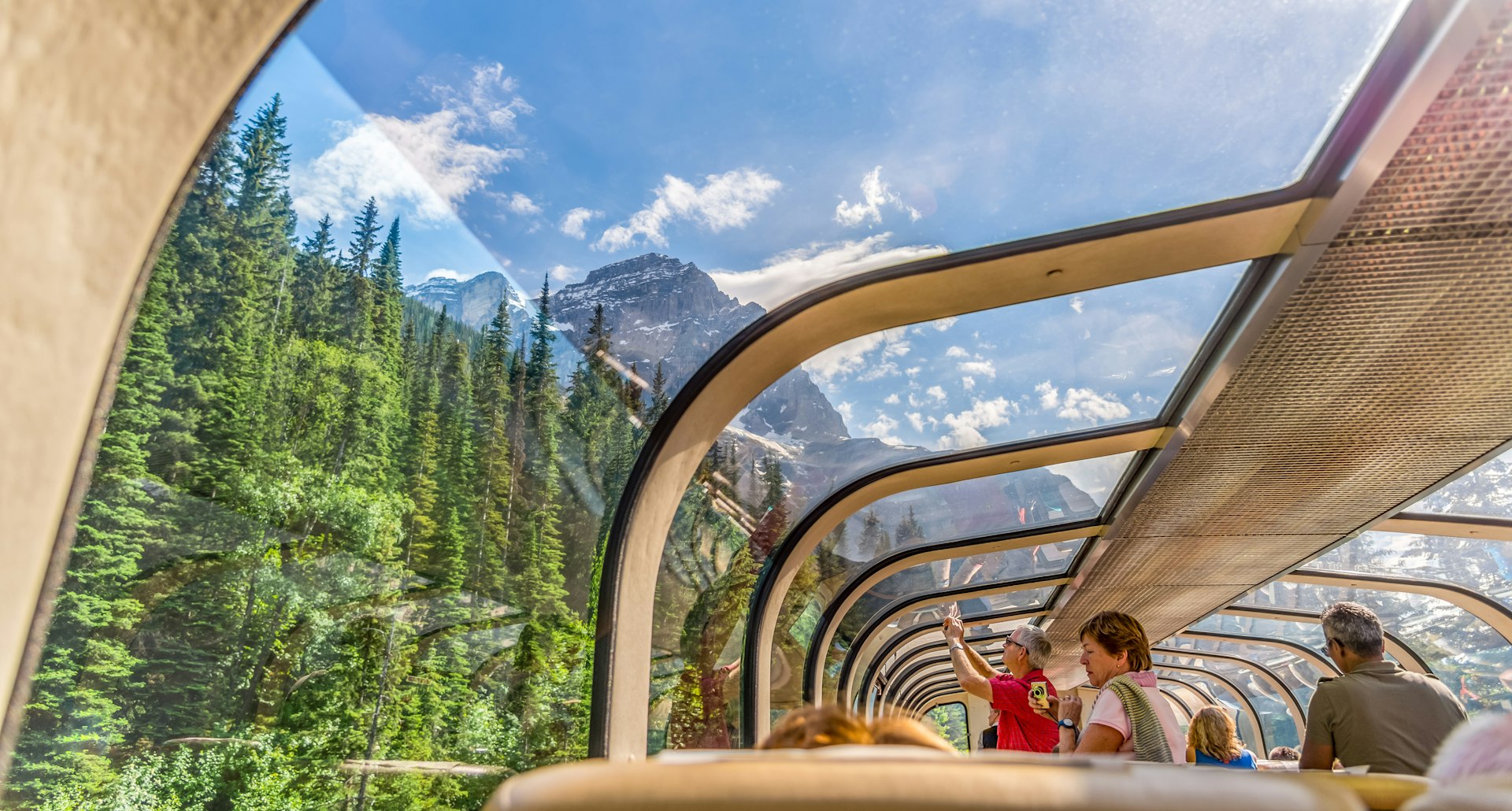This is not the setting of a fantasy book; instead, it is Canada, a country with some of the most breathtaking natural features on the planet. Its landscapes include towering mountains covered in snow, rich evergreen woods teeming with wildlife, and deep blue coasts dotted with little cities.

Six time zones, ten provinces, and three territories make up Canada, which stretches over 5000 kilometers (3107 miles) from west to east.
The second-largest country in the globe may appear to be a difficult place to travel, but thanks to new low-cost airlines, a national train service, and an abundance of car rental alternatives, Canada is now more accessible than ever.
Canada is so big and has so many diverse regions that it needs different kinds of transportation for each one. For example, trains run in the more heavily populated areas like the Toronto-Montreal corridor, while public ferries are widely used in British Columbia, Québec, and the Maritime provinces.  Regional and national carriers cross the nation, cutting days off journey time, and reaching northern communities that are inaccessible by road, allowing you to travel long distances in a shorter amount of time. Public transit is available in all major Canadian cities, not only Toronto, Montreal, and Vancouver. Streetcars, subways, buses, and bike lanes are all being expanded.Flying and riding the train (and perhaps occasionally taking a ferry) from province to province to avoid hiring a car is absolutely feasible if you want to city-hop across Canada.
Regional and national carriers cross the nation, cutting days off journey time, and reaching northern communities that are inaccessible by road, allowing you to travel long distances in a shorter amount of time. Public transit is available in all major Canadian cities, not only Toronto, Montreal, and Vancouver. Streetcars, subways, buses, and bike lanes are all being expanded.Flying and riding the train (and perhaps occasionally taking a ferry) from province to province to avoid hiring a car is absolutely feasible if you want to city-hop across Canada. While traveling by train, take in Canada’s breathtaking scenery.Train travel in Canada is a luxury experience that should be checked off your bucket list if you have the money. The lines wind through some of the most breathtaking scenery on earth, going through mountain valleys and across rivers.
While traveling by train, take in Canada’s breathtaking scenery.Train travel in Canada is a luxury experience that should be checked off your bucket list if you have the money. The lines wind through some of the most breathtaking scenery on earth, going through mountain valleys and across rivers.  Over 14,000km (8699 miles) of track are traversed by the majority of Canada’s intercity and transcontinental passenger trains, which are operated by VIA Rail. Trains are the only means of overland transportation in some isolated areas of the nation, including Churchill, Manitoba.The rail service between Québec City and Windsor, Ontario, is the most effective, especially between Montréal and Toronto, the two main hubs. Prince Edward Island, the Northwest Territories, and Newfoundland are not part of the rail network.
Over 14,000km (8699 miles) of track are traversed by the majority of Canada’s intercity and transcontinental passenger trains, which are operated by VIA Rail. Trains are the only means of overland transportation in some isolated areas of the nation, including Churchill, Manitoba.The rail service between Québec City and Windsor, Ontario, is the most effective, especially between Montréal and Toronto, the two main hubs. Prince Edward Island, the Northwest Territories, and Newfoundland are not part of the rail network. Although it is more expensive than taking the bus and frequently on par with flying, most people find traveling by rail to be enjoyable and comfortable. Peak season, when costs are around 40% higher, lasts from June until mid-October. Even five days in advance, purchasing tickets can result in huge discounts.If you wish to travel by train while taking in the scenery, VIA Rail offers a number of vintage trains, including the Canadian (from Toronto to Vancouver), Hudson Bay (from Winnipeg to Churchill, where polar bears congregate), Ocean (from Montreal to Halifax), and Jasper to Prince Rupert. Additionally, privately owned regional train operators like the renowned Rocky Mountaineer offer more alternatives for rail travel.
Although it is more expensive than taking the bus and frequently on par with flying, most people find traveling by rail to be enjoyable and comfortable. Peak season, when costs are around 40% higher, lasts from June until mid-October. Even five days in advance, purchasing tickets can result in huge discounts.If you wish to travel by train while taking in the scenery, VIA Rail offers a number of vintage trains, including the Canadian (from Toronto to Vancouver), Hudson Bay (from Winnipeg to Churchill, where polar bears congregate), Ocean (from Montreal to Halifax), and Jasper to Prince Rupert. Additionally, privately owned regional train operators like the renowned Rocky Mountaineer offer more alternatives for rail travel. 